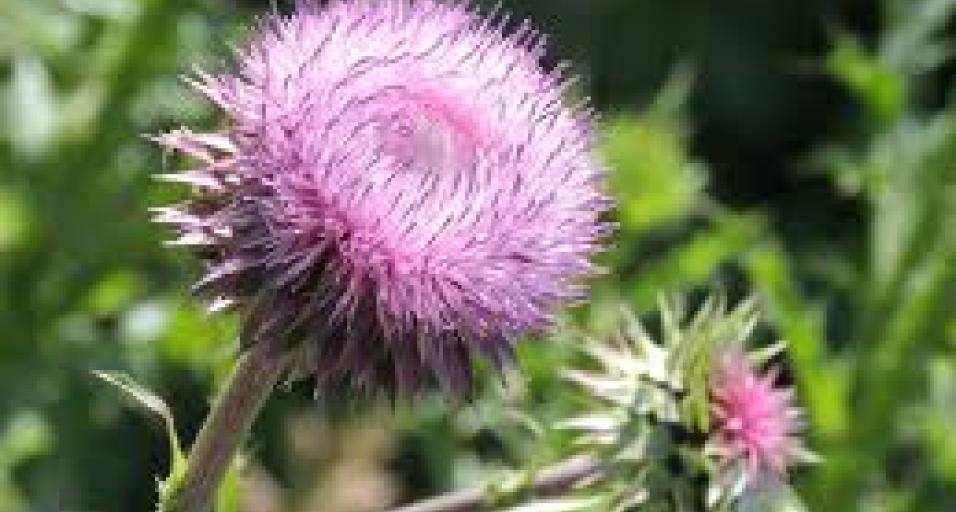Noxious thistle common on Wyoming landscape
Invasive plant species are so named due to their introduction from other places, their ability to outcompete neighboring plants, as well as their aggressive nature. A noxious weed is a plant that causes harm to the environment. Musk thistle and Canada thistle are two species that are on Wyoming’s designated noxious weed list.
Musk thistle (Carduus nutans) is a biennial plant meaning that is has a two-year lifespan growing from seed. Seedlings normally emerge in early spring and develop into rosettes, spending their first year in this growth form. The next spring, musk thistle begins to grow shoots up to eight feet tall from the rosette with frosted leaves and white spines. Purple flowers sit atop very large bracts with spines beneath. After seed set, approximately 45-55 days after growing shoots, the plant dies. Musk thistle only reproduces from seed; with a single plant able to produce up to 20,000 seeds. Bull thistle (Cirsium vulgare), is another invasive similar to musk thistle in terms of growth form and reproduction.
Canada thistle (Cirsium arvense) is a perennial plant (long-lived) that reproduces from vegetative buds within its root system as well as from seed. Leaves have a wavy appearance growing up to six inches long and armed with yellowish green colored spines. Stems can be one to four feet tall, rigid, and branching above with clusters of purple flowers sitting atop spineless bracts. Canada thistle is one of the most common noxious weeds in Wyoming and the U.S. It can infest diverse land types, ranging from roadsides, ditch banks, riparian zones, meadows, pastures, as well as irrigated and dry land agriculture fields. Large infestations have the capability to significantly reduce agriculture production and live-
stock forage as well as reduce native plant species abundance. Canada thistle prefers moist soils, but it can be found in a variety of soil types and has been found at elevations up to 12,000 feet. It is interesting to note that some wildlife (e.g. elk) and livestock will eat Canada thistle especially early in its growth stage supplying the animals with a surprisingly high nutritive value.
Effective control of all noxious thistles requires a combination of methods, especially for Canada thistle due to its ability to spread via roots or seed. Shoot populations can be reduced to low levels by regular, short-term, rotational grazing which weakens nutrient transfer to roots and reduces their ability to grow. This strategy can then be followed by chemical treatment to further stress the plant resulting in its death. Chemical in combination with biological treatments (bug releases) are also effective. The Thistle Rosette Weevil and the Thistle Seed Head Weevil are effective in dramatically reducing reproduction of biennial thistles.
Wyoming Game and Fish (307) 777-4600

